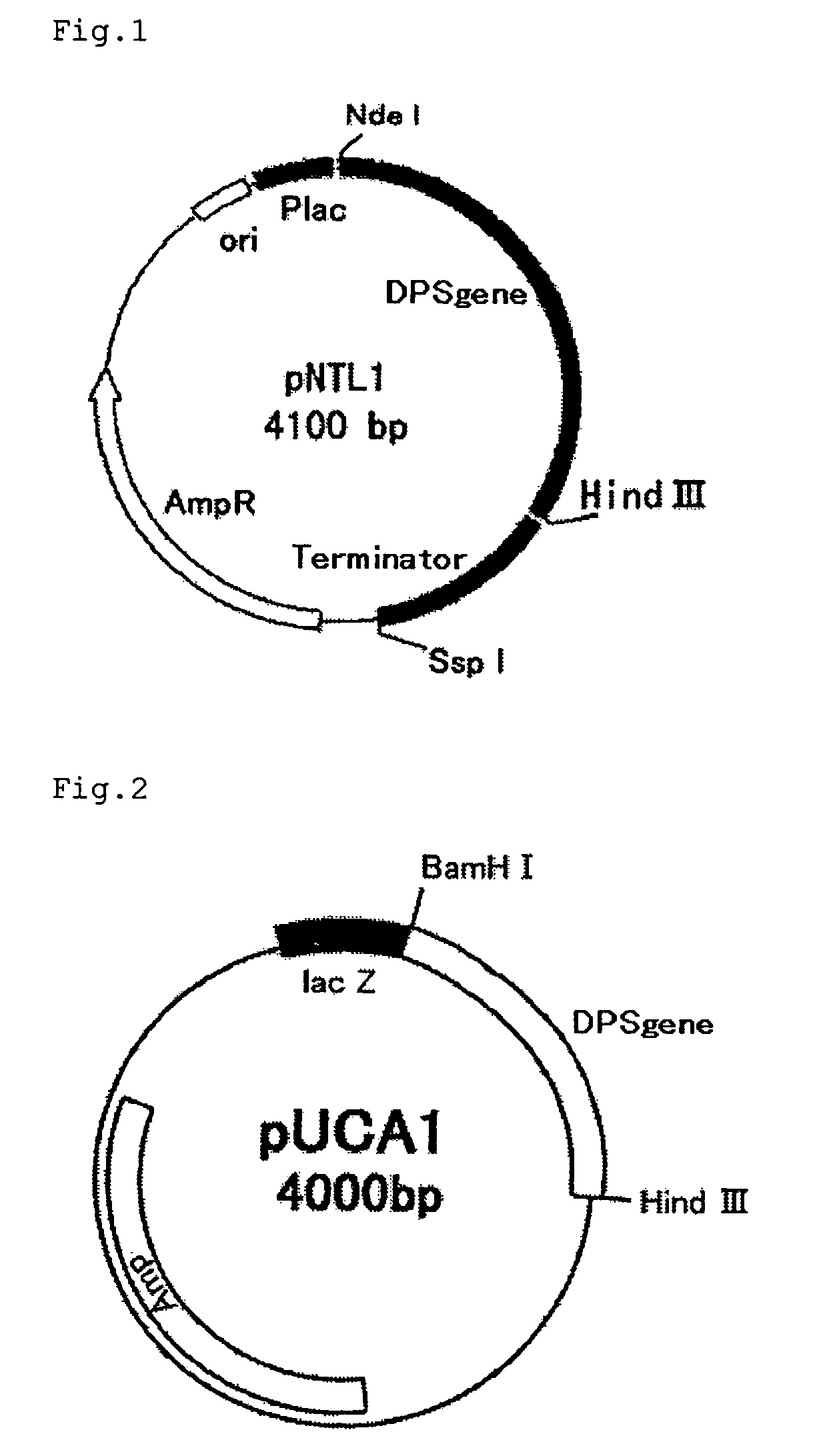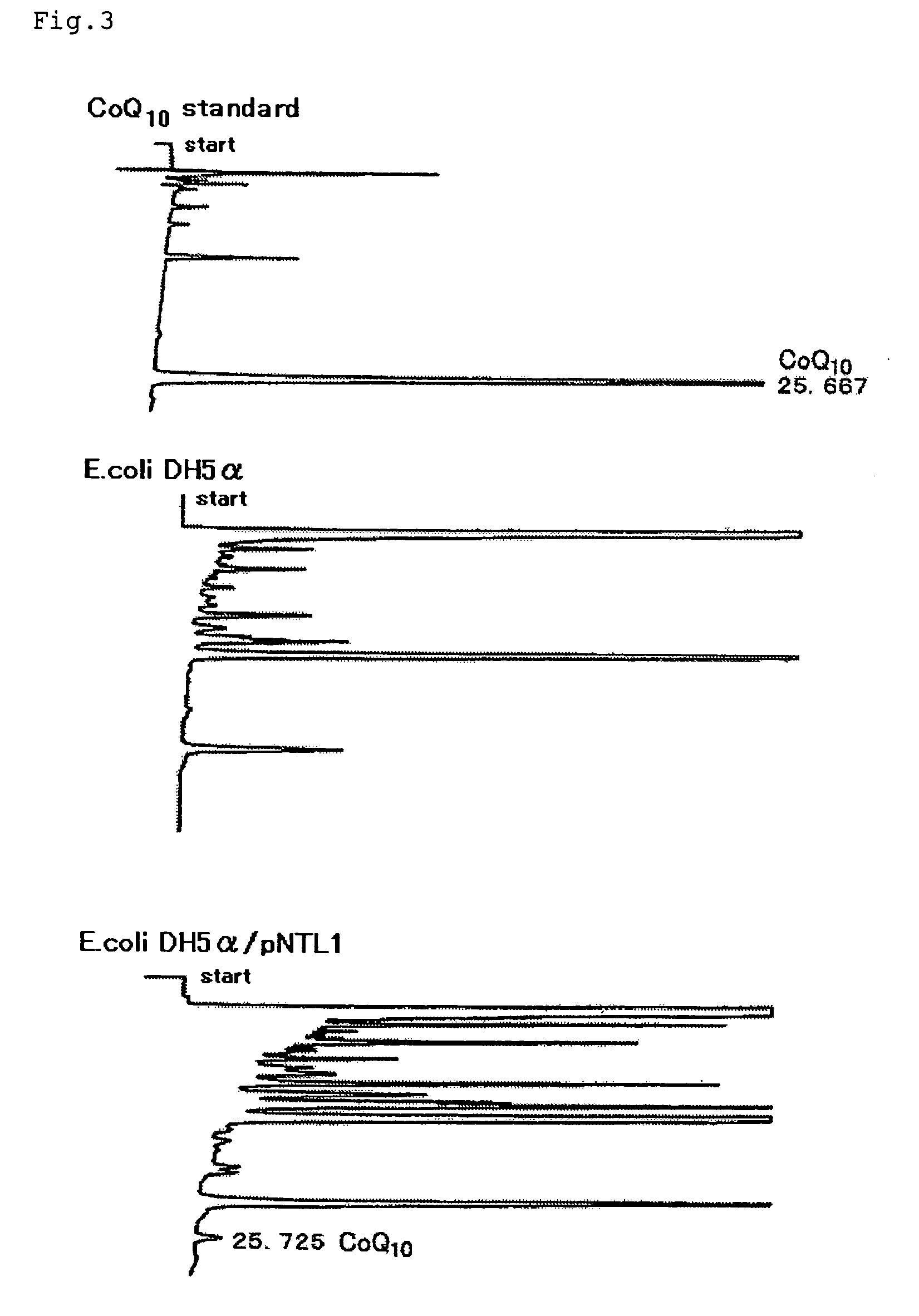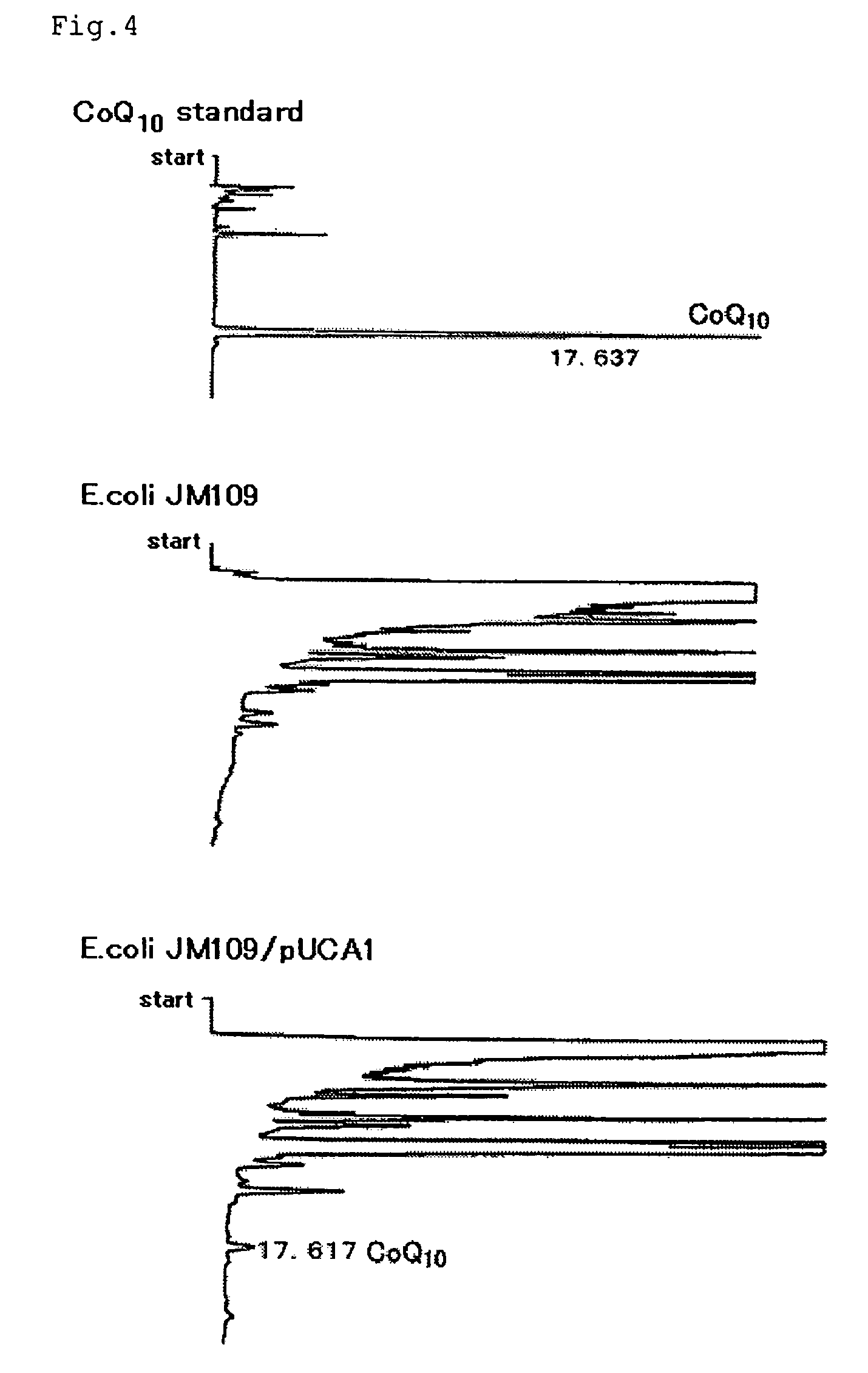Process for producing coenzyme Q10
- Summary
- Abstract
- Description
- Claims
- Application Information
AI Technical Summary
Benefits of technology
Problems solved by technology
Method used
Image
Examples
example 1
[0062]The chromosomal DNAs of Leucosporidium scotti IFO 1212 and Aspergillus clavatus JCM 1718 were prepared by the method of C. S. Hoffman et al. (Gene, 57 (1987), 267-272). Based on the homology with the known long-chain prenyl diphosphate synthase gene, primers for use in PCR, namely DPS-1 (SEQ ID NO:5 in the sequence listing) and DPS-1 1AS (SEQ ID NO:6 in the sequence listing), were designed. Using these, a PCR cycle of 94° C., 1 minute→43° C., 2 minutes→72° C., 2 minutes, were repeated 40 times after 3 minutes of heat treatment at 94° C., followed by 1.2% agarose gel electrophoresis.
[0063]The thus-obtained fragment, about 220 bp in size, was purified by excising the corresponding gel portion from the gel and then treating with a DNA extraction kit (Sephaglas (trademark) BrandPrep Kit, product of Amersham Pharmacia Biotech), and the purified fragment was cloned into a vector for expression in Escherichia coli using a PCR product direct cloning kit (pT7 BlueT-Vector Kit, product ...
example 2
[0064]Leucosporidium scotti IFO 1212 and Aspergillus clavatus JCM 1718 were cultured in 50 mL of 703 medium (5 g / L pepton, 3 g / L yeast extract, 3 g / L malt extract, and 1 g / L glucose, pH 6.0) for 48 hours at 25° C. Then, the cells were harvested by centrifugation at 3,000 revolutions for 20 minutes and frozen immediately in liquid nitrogen.
[0065]The frozen cells were placed in a mortar chilled previously at −70° C. and ground to a powder with a pestle while being kept frozen by occasionally adding liquid nitrogen. Total RNA was prepared from the well-powdered cells using an RNeasy Maxi RNA Purification Kit (product of Qiagen K.K.). Total RNA thus extracted was further purified using an RNeasy Mini RNA Purification Kit (product of Qiagen K.K.). From the purified total RNA, mRNA was prepared using an mRNA purification kit (Ologotex-dT30 (trademark) mRNA Purification kit, product of Takara Shuzo Co., Ltd.).
example 3
[0066]The DNA fragment containing the region from the DNA obtained in Example 1 to the 3′-terminal region of the decaprenyl diphosphate synthase gene of Leucosporidium scotti IFO 1212 was obtained. RT-PCR was carried out using an RT-PCR kit (High fidelity RNA PCR Kit, product of Takara Shuzo Co., Ltd.) and primer L1S (SEQ ID NO:7 in the sequence listing), which was generated based on the internal sequence of the DNA fragment obtained in Example 1. The thus-obtained fragment, about 850 bp in size, was purified by excising the corresponding gel portion from the gel and then treating with a DNA extraction kit (Sephaglas (trademark) BrandPrep Kit, product of Amersham Pharmacia Biotech), and the purified fragment was cloned into a vector for expression in Escherichia coli using a PCR product direct cloning kit (pT7 BlueT-Vector Kit, product of NOVAGEN) to give pT7-L2DPS. The DNA base sequence was determined by carrying out the reaction on a DNA sequencer (model 377, product of PerkinElme...
PUM
| Property | Measurement | Unit |
|---|---|---|
| Strain point | aaaaa | aaaaa |
Abstract
Description
Claims
Application Information
 Login to View More
Login to View More - R&D
- Intellectual Property
- Life Sciences
- Materials
- Tech Scout
- Unparalleled Data Quality
- Higher Quality Content
- 60% Fewer Hallucinations
Browse by: Latest US Patents, China's latest patents, Technical Efficacy Thesaurus, Application Domain, Technology Topic, Popular Technical Reports.
© 2025 PatSnap. All rights reserved.Legal|Privacy policy|Modern Slavery Act Transparency Statement|Sitemap|About US| Contact US: help@patsnap.com



